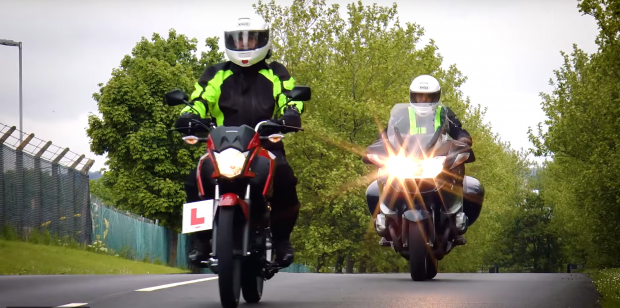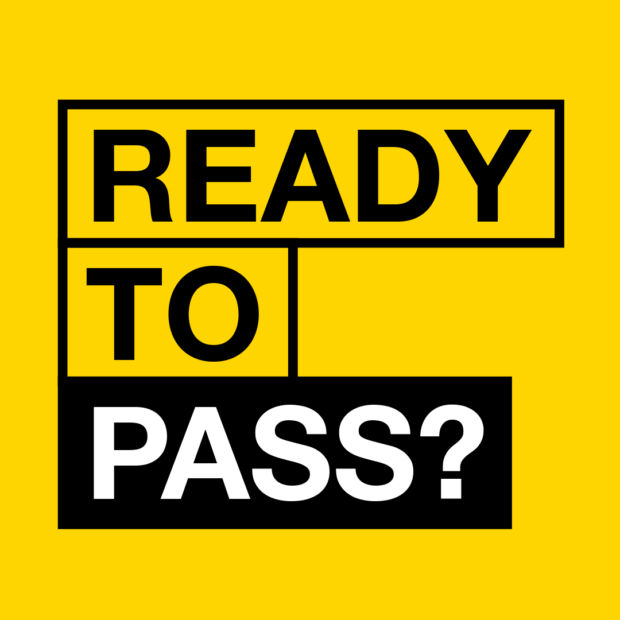
It’s been just over a year since we started doing more compliance checks on the motorcycling industry.
In this blog post, I wanted to share with you what we’ve found over the past year and give you tips to make sure your approved training body (ATB) stays on the right side of the rules.
You can read more about how the CBT enforcement team works and what we do, in our blog post from September 2018.
What are we looking for?
Compliance checks allow us to make sure training schools are following the correct policies and procedures and that the equipment they’re using is safe and legal.
So, our enforcement managers tend to look at things like:
- the condition of the motorcycles being used, and whether they’re taxed and MOT’d
- whether correct protective equipment is being given to trainees and in a satisfactory condition
- whether training records are being completed properly
- if all incidents are being reported to DVSA
These checks are carried out based on intelligence gathered from a variety of sources including customer complaints, previous standards checks and previous compliance checks.
What have we found?
Although we can’t always publicise a lot of the enforcement action we take, I want to share with you a few shocking examples of bad practice we’ve seen over the past year.
During 2019 we removed over 100 instructor licenses and took 18 ATBs off the official register.
Short CBTs - or none at all!
We’ve investigated and closed some ATBs, for selling certificates to riders without any training being undertaken.
It’s really important trainers assess the ability of a rider every time they take their CBT, regardless of whether they are a total novice or on a repeat CBT. Motorcyclists are some of the most vulnerable road users, and ATBs play a vital role in making sure they have the skills to ride safely.
We’ve also found many schools delivering short CBTs, with some courses being completed in less than 3 hours.
Trainee ratios
Another key issue we’ve found is ATBs training more riders than their site is authorised for.
This means the riders end up not getting enough time on all aspect of the required training syllabus. The road ride and element C (practising riding skills on-site) are areas which are often shortened or not completed in full.
Untaxed and no MOT
We’ve taken action against ATBs using vehicles that are not fit or legal to be on the road. In the worst cases, this action includes instant closures of some schools.
Some were delivering training on motorcycles that have no tax or a valid MOT. In the most extreme cases, we’ve found schools using several motorcycles that have been declared as SORN, on the road.
Unapproved training sites
We’ve found some ATBs using parts of their site which have not been approved for training or training at sites that are no longer fit for purpose.
This covers areas like car parks and sports facilities where the site may have changed significantly since it was last authorised. If you have a problem with your site contact your local CBT manager, DVSA will do whatever we can to make sure your site is up and running as soon as possible.
If part of a site has not been approved, it’s because we feel it’s not safe for you or your trainees.
In more extreme cases, we’ve found schools who claimed to have used their approved training site at a time when we know it was unusable.
Some schools claim to have been conducting CBTs at the same time as a car boot sale or football tournament was taking place on their training site. This type of fraudulent action can’t be defended and we will continue to take firm action against ATBs who break the rules in this way.
Stick to the rules
We know most of you would never intentionally break the rules. However, I wanted to give you some top tips on how to make sure you avoid any unintentional breaches.
You should make sure you are familiar with your site plan, it’s important to know what part of your area is safe to train on (DVSA will issue an updated plan if necessary)
You should also make sure your instructors know what is safe to carry out on your site, to help avoid any unintentional breaches by someone using part of the site for training that hasn’t been approved, or isn’t safe because there are parked cars in the way.
If you need any more advice, you can find a handy poster in your local test centre with the name and contact of your CBT enforcement manager. I’d encourage you to get in touch with them if you have any questions about staying compliant.

3 comments
Comment by Sandy Allan mAIRSO, Academy Member Road Safety GB posted on
It comes as no great surprise that there is a large & persistent cowboy element within the motorcycle training fraternity?
Immediately motorcycle training became a business model, profit driven, rather than like minded people volunteering to training future riders, it went downhill.
DVSA certainly didn’t help matters with the acceptance of the 50kmh by the then minister Lord Ladyman of the EU license rules without further checks? Coupled with having to buy ‘compliant’ power to weight ratio machines. Which disadvantaged riders of smaller stature.
Perhaps with the U.K. removing itself from the EU we can actually get a training & test regime fit for purpose, rather than the long winded & multi tiered edifice currently in place? Motorcycle use was always meant to be a ‘cheap’ form of transport. This hasn’t been the case for at least 20 years!
Comment by Jim Harley posted on
That's interesting reading Mark.
Whilst i don't agree with the "Enforcement" mindset. I believe the working together style gets better results and there are serious legal flaws in the "Compliance" route with the current CBT regulations . It is however something talked about constantly ATB's at meetings.
Sandy all training schools are a business model of some kind and there is a "Cowboy" element in all Trades I'd say. so it pays to do your homework !
DVSA had no choice in the 50 Km matter it was decided at government /European level. I know because I was an industry representative on the project that implemented the 3EDD.
The test as it is isn't that difficult with the right training and a willing attitude to taking the "Right" amount and structure of Training. It only really splits the old test manoeuvres (and adds a few more).
The main Benefit I see ( to the end motorcyclist ) is at some test sites is that this frees up "Real Road Time" and produces a more realistic test encompassing more types of road network. Maybe after European exit combining both tests into 1 event and possibly adopting the upgrade of licences by training a move I opposed as I didn't thing the training industry ...going on what I'd herd were trustworthy enough and to some extent the article bears that out.
I'm sure the good schools have nothing to worry about.
Jim Harley
Comment by Sean Bonner posted on
I have to say that the compliance checks for training schools were long overdue and it was no surprise what has been found. It's just a shame that this puts such a shadow over our industry once again however schools with high standards have absolutely nothing to worry about and this will only steer new riders to the higher standard schools when the rouges are forced out.
Sean Bonner